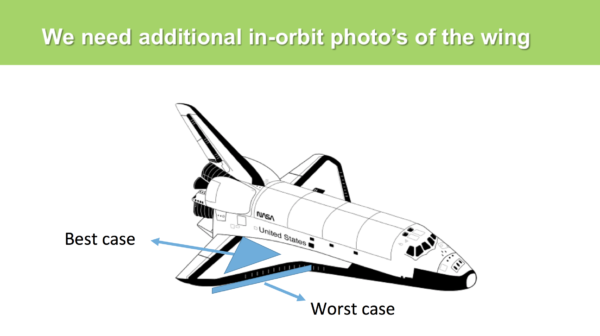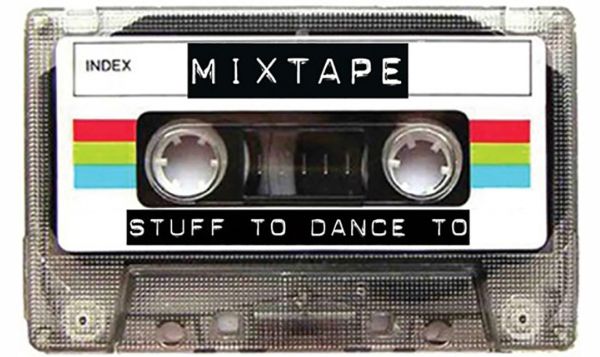On January 16th, 2003, the Columbia space shuttle mission launched. After liftoff large chunks of spray-on foam insulation (SOFI) broke off from an external tank and struck the left wing. As a result Columbia and its seven crew members were orbiting Earth with possible wing damage. Would Columbia survive re-entry into Earth’s atmosphere or would the wing damage cause the spacecraft to be torn apart?
NASA engineers suspected this could be a problem and produced a slide deck to communicate the gravity of the situation. This was one of the slides they produced:

Ambiguously written slides like the one above helped reassure NASA officials the damage was inconsequential and it was safe to attempt re-entry. On February 1st, 2003 Columbia re-entered Earth’s atmosphere at a blistering speed of 5 miles per second. Super-heated gases seeped into cracks in the damaged wing, eroding the wing’s structure and at 9:05 a.m. a loud boom signaled Columbia’s demise over Texas. All crew members were lost.
An independent review board concluded that the ineffective slides were one of many contributing factors leading to NASA’s flawed decision to attempt re-entry.
In what follows I’ll improve on the above slide with 4 rules to ensure clarity in every marketing presentation.
1. Summarize Your Key Point In The title
One of the easiest ways to make slides better is summarizing the key point in the title. Too many slides have generic, less descriptive titles. The goal should be if someone drops in during your presentation for only 5 seconds, she should know what you’re trying to say from your title.
The NASA engineers did some simulations, but the results were inconclusive, as their historic data didn’t contain pieces as large as the ones that hit Columbia’s wing. So they wanted to say that they actually didn’t know if there would be a problem or not. They needed extra information in the form of in-orbit photos. So let’s put that in the title: We Need Additional In-Orbit Photos Of The Wing
2. Working Memory Can Only Hold 3-4 Chunks Of Information
Many presenters are cursed by their knowledge and put everything they know on a slide and just expect the audience will grasp everything and make conclusions by themselves. Our brain’s working memory can only hold 3 to 4 chunks of information at once. So when presenting we should make sure we never bombard our audience with more than 3 to 4 things.
On the NASA slide, there are 4 core messages:
- The simulations predicted a complete penetration
- The results however are inconclusive because there’s no historic data on chunks of insulation of this size
- If the heat tiles were hit, there wouldn’t be a problem
- If the wing is struck, there would be a problem
3. Bullet Points Add Drama, But Don’t Use Sub Bullets
In a lot of “how to make better presentation” guides you’ll find that bullet points are evil. But actually bullet points are helpful to make your core points stand out. The reason bullet points are considered evil is because many presenters overuse them and overload the working memory. So don’t be afraid to use bullet points as long as you have 4 or less, but avoid sub-bullets.
Let’s combine the three rules on the NASA slide and we come up with this revamped slide:

4. Picture Superiority Effect
Pictures always resonate better with audiences when giving a presentation. Use them as much as possible.
The NASA engineers could have started with a slide like this to introduce the problem:

As information design expert Edward Tufte later noted, all of the necessary information to understand the danger was there; it was just impossible to follow. One of the recommendations that came out of the investigation into the disaster was that NASA scientists should never again rely on PowerPoint alone to present important data and scientific information. In the business world, we do nothing all day but present gobs of data with PowerPoint. NASA forbids its use for that purpose.
Effective marketing is effective communication. The messenger and the receiver see, hear and feel the same thing.
The Blake Project Can Help: The Strategic Brand Storytelling Workshop
Branding Strategy Insider is a service of The Blake Project: A strategic brand consultancy specializing in Brand Research, Brand Strategy, Brand Growth and Brand Education




